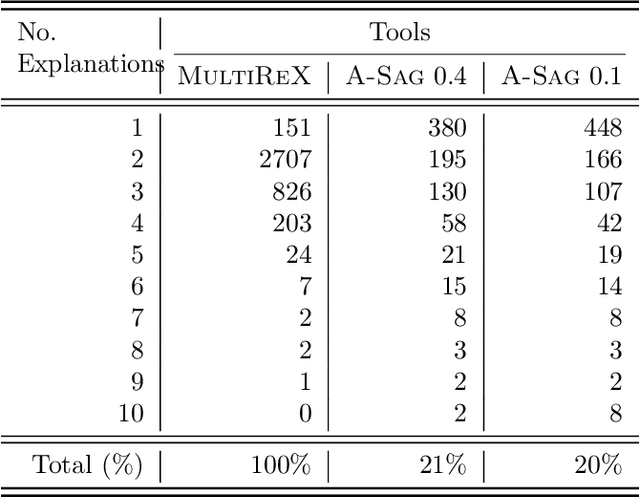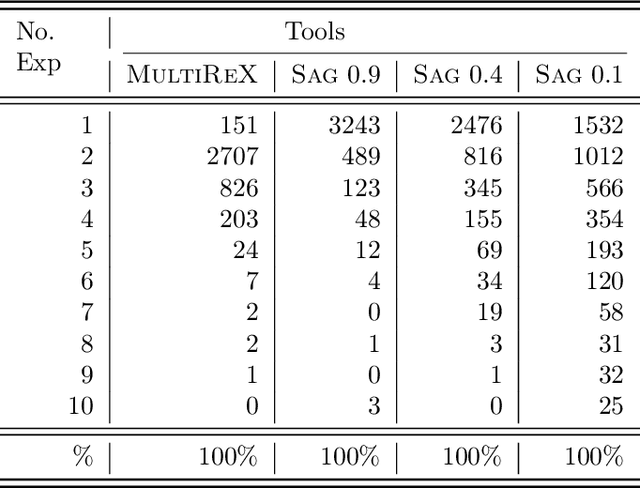Multiple Different Explanations for Image Classifiers
Paper and Code
Sep 28, 2023



Existing explanation tools for image classifiers usually give only one single explanation for an image. For many images, however, both humans and image classifiers accept more than one explanation for the image label. Thus, restricting the number of explanations to just one severely limits the insight into the behavior of the classifier. In this paper, we describe an algorithm and a tool, REX, for computing multiple explanations of the output of a black-box image classifier for a given image. Our algorithm uses a principled approach based on causal theory. We analyse its theoretical complexity and provide experimental results showing that REX finds multiple explanations on 7 times more images than the previous work on the ImageNet-mini benchmark.
 Add to Chrome
Add to Chrome Add to Firefox
Add to Firefox Add to Edge
Add to Edge